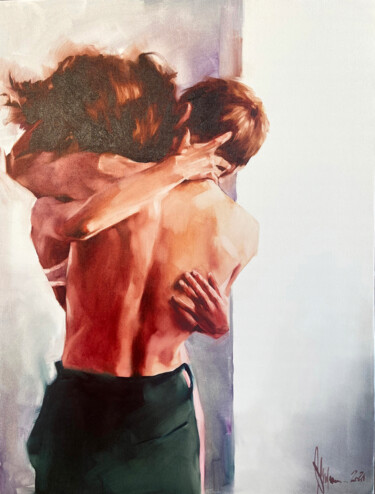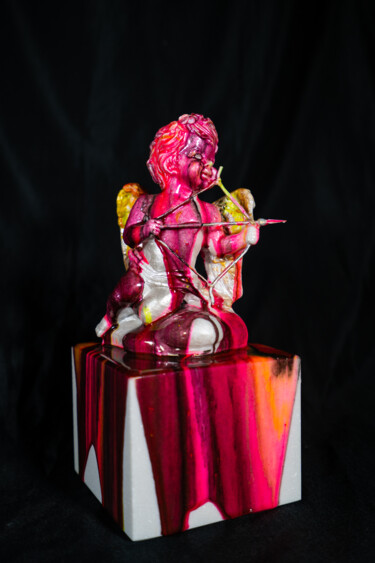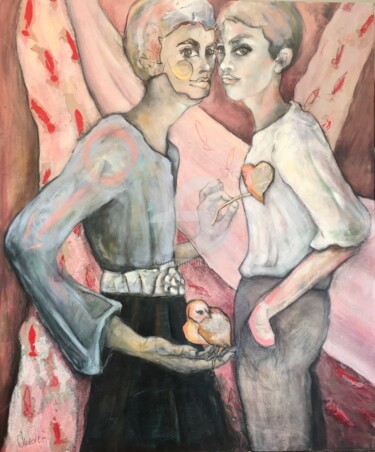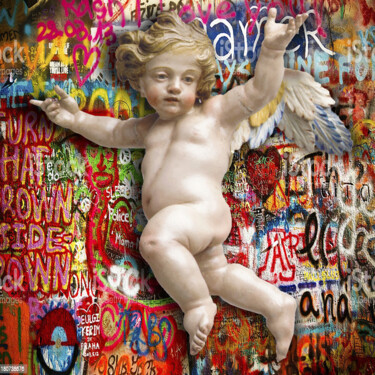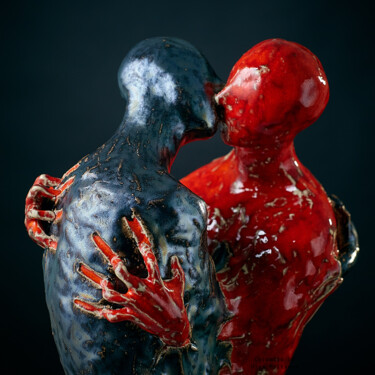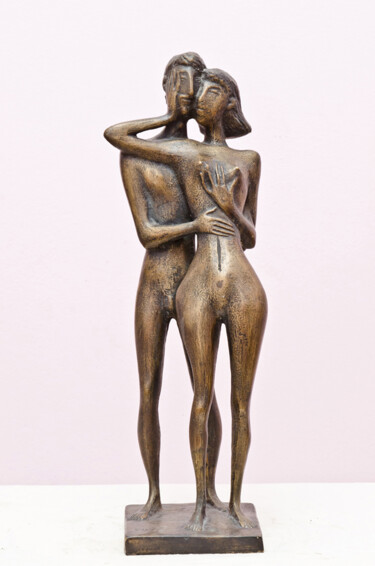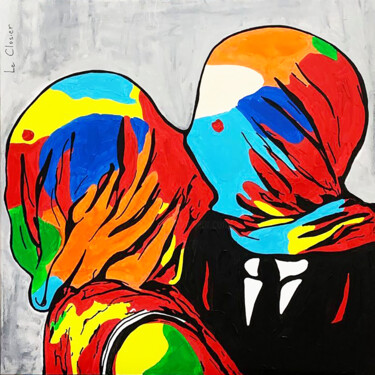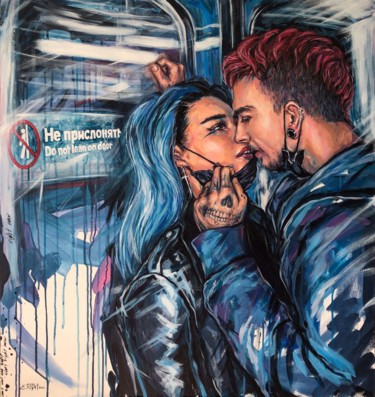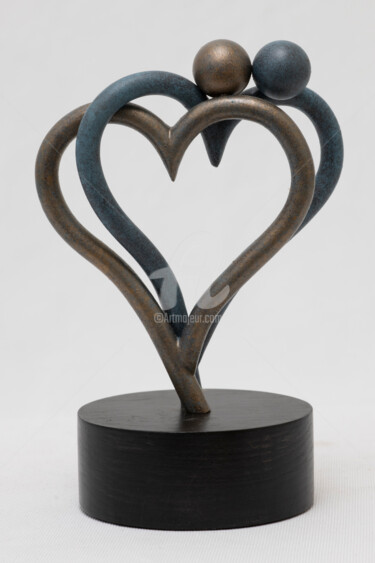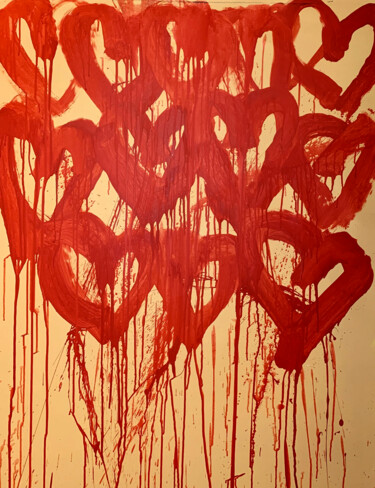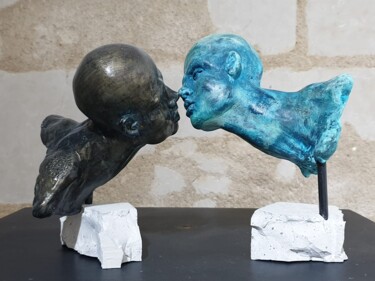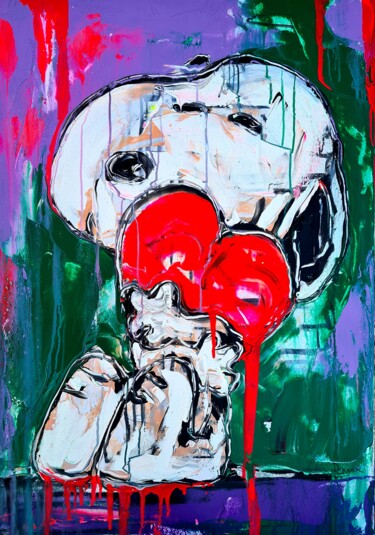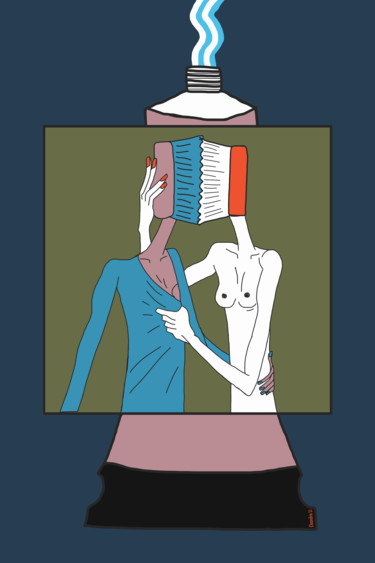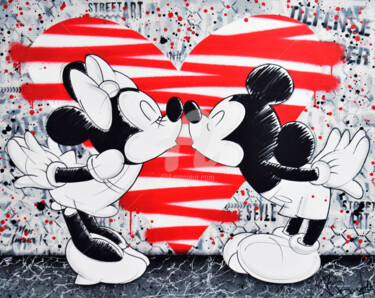 Gustave Klimt, The Kiss, 1907-1908. Oil on canvas, 180 x 180 cm. Vienna: Österreichische Galerie Belvedere.
Gustave Klimt, The Kiss, 1907-1908. Oil on canvas, 180 x 180 cm. Vienna: Österreichische Galerie Belvedere.
Valentine's Day and Art
On the occasion of February 14, the feast of lovers of Valentine's Day, it is possible, through the vastness and the eternal relevance of the historical-artistic matter, to celebrate all types, or almost, of existing love, in order to exalt the purity of this noble feeling, inextricably linked also to the primordial impetus of artistic creation.
René Magritte, The Lovers, 1928. Oil on canvas, 54×73 cm. New York: MoMA. @the.art.brat
Heterosexual love: the most popular and "canonical" celebration of love in art
The most popular and "canonical" celebration of love in art, which has immortalized forever kisses, embraces, tenderness and passion between lovers, appears immediately well delineated in our minds thanks to the most famous masterpieces of the genre, such as, for example, Love and Psyche by Antonio Canova, the Kiss by Gustave Klimt, Au lit: le baisere by Henri Toulouse-Lautrec, Birthday by Marc Chagall and The Lovers by René Magritte. These works have been distinguished by the exclusive celebration of love between man and woman, but in the history of art have been highlighted other types of love...
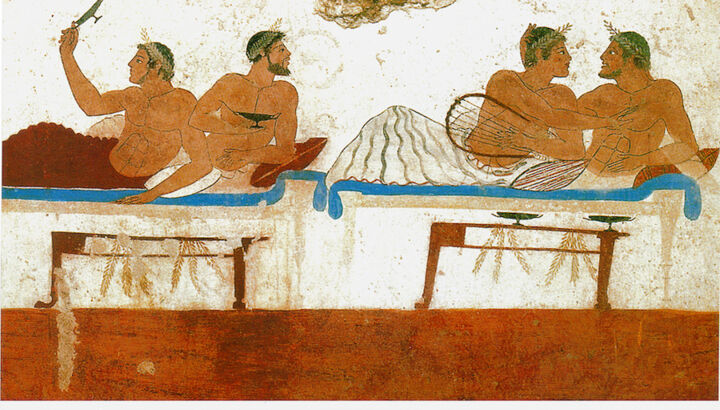 Greek wall painting, 470 B.C. circa. Paestum: Tomb of the Swindler.
Greek wall painting, 470 B.C. circa. Paestum: Tomb of the Swindler.
Charles Demuth, Dancing Sailors, 1917. Watercolor. Cleveland: Cleveland Museum of Art.
Bansky, Kissing coppers, 2004. Graffiti originally located near downtown Brighton, now part of a private collection.
Homosexual love in art
The history of the depiction of homosexual love in art begins in ancient times, when, even in ancient Greece, lovers of the same sex were often represented, especially on vases and frescoes. In fact, within the Greek culture, carnal relations between males were widespread, and socially accepted, especially those between men in adulthood and adolescents. Just during the period of classical antiquity, even great writers such as Herodotus and Plato have experienced the above type of love, commonly known by the term of pederasty. Later, with the imposition of the Christian religion and cultural changes, homosexual love was almost excluded from art, returning to make more talk about itself in the twentieth century, as evidenced, for example, by the famous watercolor by Charles Demuth, Dancing Sailors (1917), where, despite the presence of some women, were depicted two sailors dancing tenderly together. Finally, contemporary art represents the definitive consecration of the aforementioned amorous topic, as can be seen in: Untitled (couple in black, red and green) (1982) by Keith Haring, Two Men Dancing (1984) by Robert Mapplethorpe, Love That Not Love (1990) by Herbert Singleton and Kissing coppers (2004) by Bansky.
Simeon Solomon, Sappho and Erinna in a Garden at Mytilene, 1864. Watercolor on paper, 330 × 381 mm. London: Tate Modern. @martin_beisly
Marie Høeg, Marie Høeg and her partner Bolette Berg, 1895-1903. Photograph. Horten: Preus museum's collection.
Sapphic love in art
The works of art of the great masters of all times have celebrated, with greater freedom of expression than homosexual love, the feeling that can arise between two women. In fact, masterpieces of the caliber of Le Sommeil (1866) by Gustave Courbet, The Naiads (1881) by Gioacchino Pagliei and Two Nudes in the Forest (1939) by Frida Khalo have addressed this theme, sometimes in an erotic and sensual way. In the context of Valentine's Day, however, it is good to highlight works that address sapphic love with romanticism, sweetness, sophistication and demureness, such as: Lovers beneath an umbrella in the snow (1764-72) by Suzuki Harunobo, Sappho and Erinna in a Garden at Mytilene (1864) by Simeon Solomon, Self portrait of Marie Høeg and her partner Bolette Berg (1895-1903) by Marie Høeg and Le Bal élégant, La Danse à la campagne (1913) by Marie Laurencin.
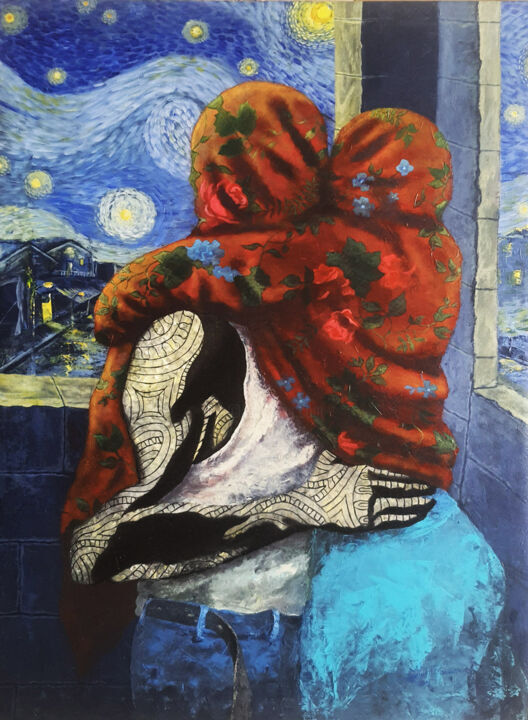 Maxwell Olisedeme, Lovers IV, 2021. Acrylic on canvas, 122 x 91.4 cm.
Maxwell Olisedeme, Lovers IV, 2021. Acrylic on canvas, 122 x 91.4 cm.
 Mahé, We will have the face of our hopes, 2021. Oil on canvas, 116 x 89 cm.
Mahé, We will have the face of our hopes, 2021. Oil on canvas, 116 x 89 cm.
The most contemporary and innovative interpretations of love
The extensive theme of love, rich and varied, both in its forms and in its manifestations, has been the subject of many works of art created by the artists of Artmajeur, aimed at celebrating this feeling through original reinterpretations of the classics, new perspective shots, innovative contemporary themes and unusual subjects. Regarding the paintings that represent clear, but very personal, interpretations of the great romantic masterpieces of art history, it is worth highlighting Lovers IV by Maxwell Olisedem and We will have the face of our hopes by Mahé. In fact, in the first work the iconic covered faces of Magritte's The Lovers are taken up, which, innovatively depicted in half-length, leave room for new details of the contemporary era, relating to the clothing and physicality of the protagonists of the painting. In addition, in the above-mentioned work, compared to The Lovers, greater emphasis is given to the background, which is embellished by a "remake" of Vincent Van Gogh's Starry Night. On the other hand, as far as We will have the face of our hopes is concerned, the artist of Artmajeur has investigated, with greater erotic intensity, an interlocking of two faces, reminiscent of the tender lovers of Klimt's Kiss.
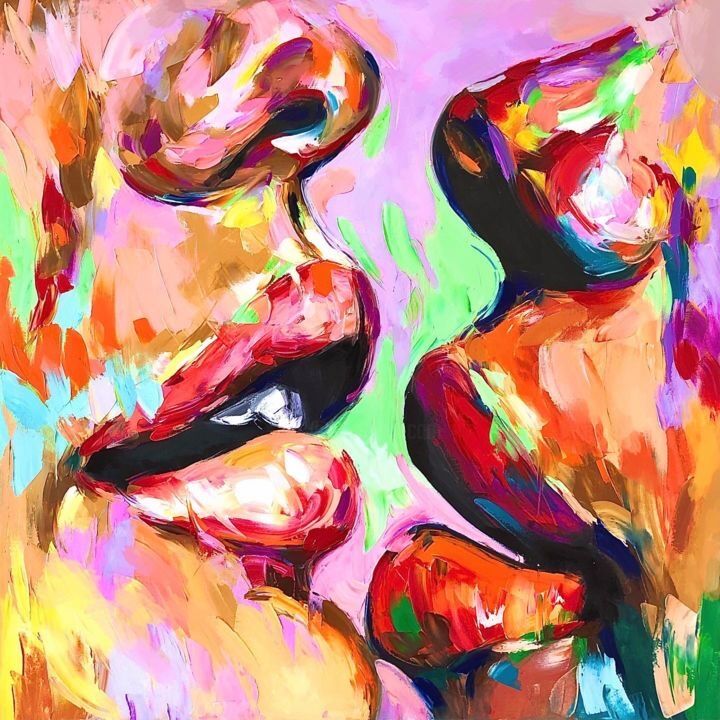 Yulia Varlamova, No social distance, 2021. Oil on canvas, 80x 80 cm.
Yulia Varlamova, No social distance, 2021. Oil on canvas, 80x 80 cm.
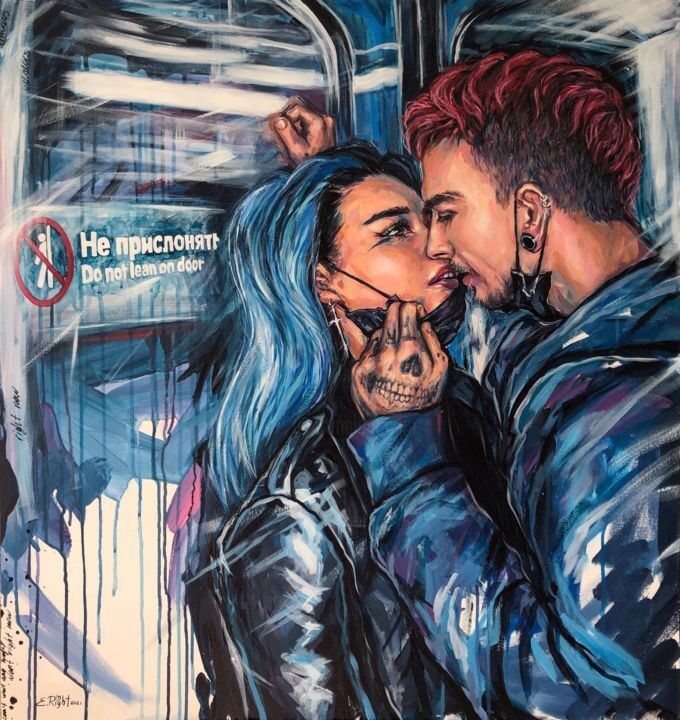 Elena Right, The outlaws, 2021. Acrylic on canvas, 85 x 80 cm.
Elena Right, The outlaws, 2021. Acrylic on canvas, 85 x 80 cm.
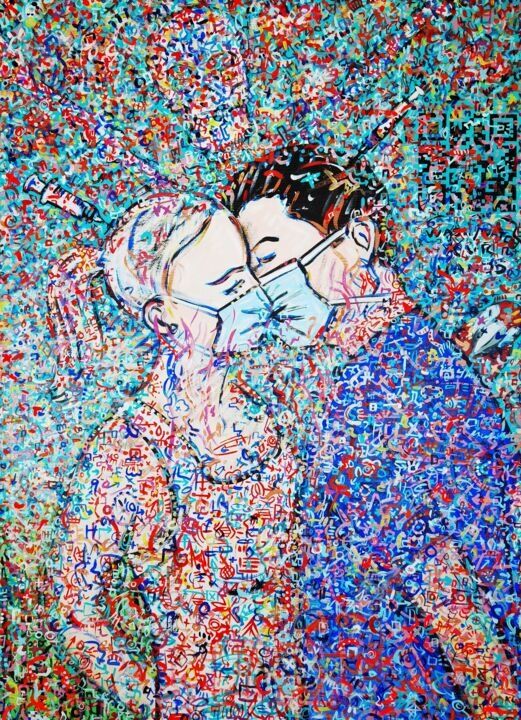 Leo Kogan, Love sustainable, 2022, Acrylic on canvas, 95 x 75 cm.
Leo Kogan, Love sustainable, 2022, Acrylic on canvas, 95 x 75 cm.
As for the innovative perspective shots used by the artists of Artmajeur in order to capture love, they are well exemplified by the close-up of Yulia Varlamova's painting, No social distance, aimed at telling us the sensuality and delicacy of the Sapphic feeling, depicting only the colorful, sensual and refined meeting between two female lips. On the other hand, with regard to innovative themes, directly extrapolated from contemporary reality, we find the paintings by Ellena Right, The outlaws, and Leo Kogan, Love sustainable, which perfectly tell the dynamics of love at the time of the Covid-19. Finally, as far as unusual subjects are concerned, the protagonists of the contemporary love stories told by the artists of Artmajeur are also animals and cartoons, as evidenced by Natalie Levkovska's drawing, Flamingo kiss, Alina Nikitina's painting, Love, and Virginie Turnam's oil painting, Love.
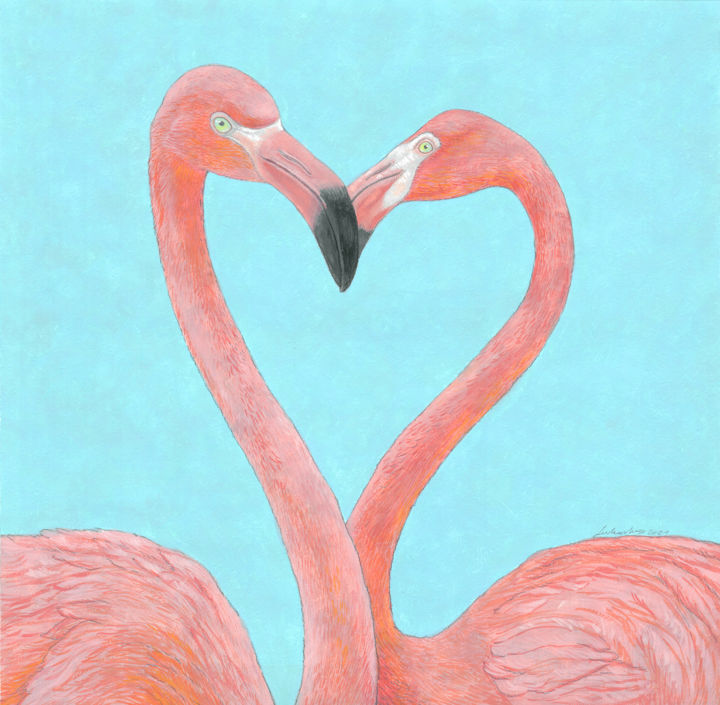 Natalie Levkovska, Flamingo kiss, 2021. Drawing, Gouache / Pencil on paper, 41.5 x 41.5 cm.
Natalie Levkovska, Flamingo kiss, 2021. Drawing, Gouache / Pencil on paper, 41.5 x 41.5 cm.
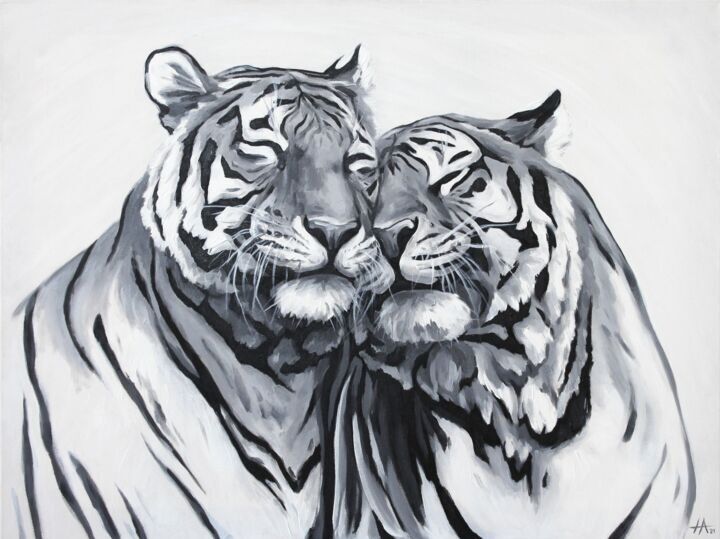 Alina Nikitina, Love, 2021. Oil on canvas, 60 x 80 cm.
Alina Nikitina, Love, 2021. Oil on canvas, 60 x 80 cm.
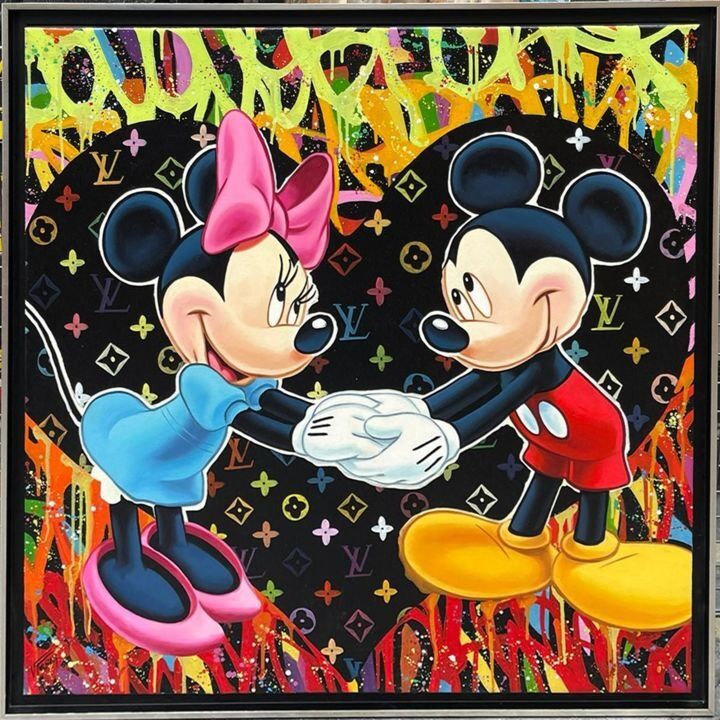 Virginie Turban, Love. Oil on canvas, 100 x 100 cm.
Virginie Turban, Love. Oil on canvas, 100 x 100 cm.

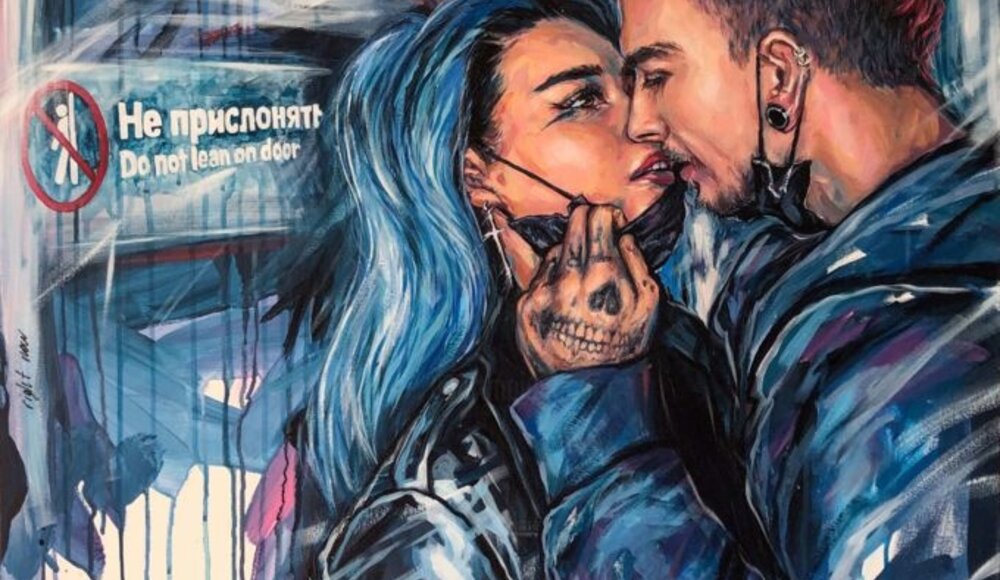
 Olimpia Gaia Martinelli
Olimpia Gaia Martinelli
